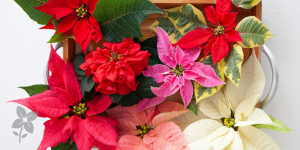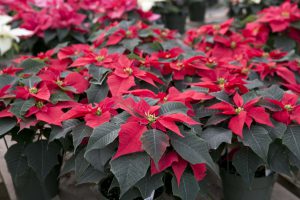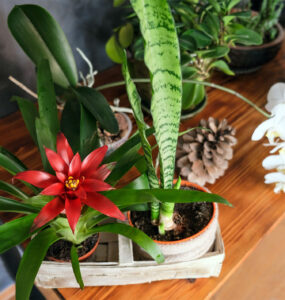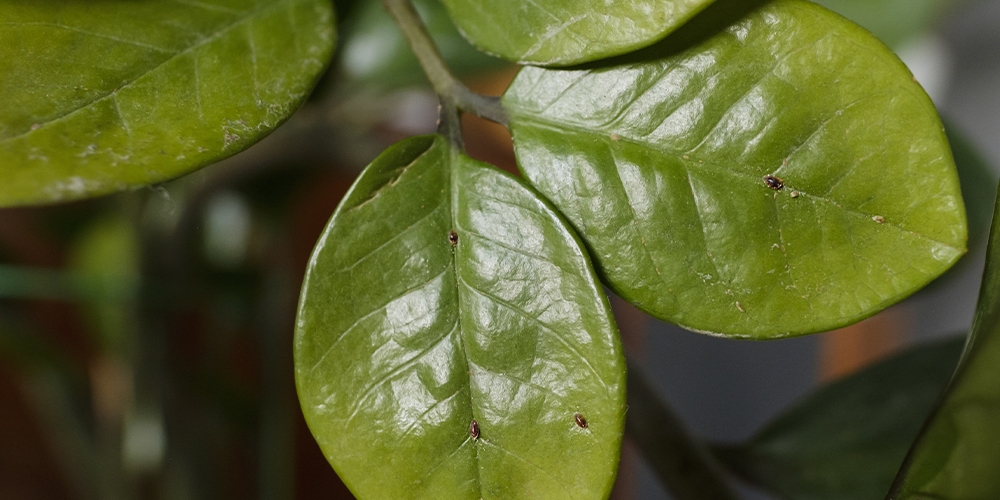
While it’s nice that we’ve had a pretty gentle October, we all know it can’t last much longer. Here we are, near the end of autumn, bracing ourselves for another round of winter in Edmonton. Pretty soon we’ll all be scurrying inside to hide from the snow and frost””and so will the bugs.
Have you noticed any strange behaviour in your houseplants? Any leaves with weird spots? Or unexpectedly turning yellow and dropping? Little black flies, like fruit flies, hovering around? Your plants might be suffering from a pest infestation.
But, you take excellent care of your plants, especially this year being stuck at home more. Where did these annoying buys come from, and why did they show up just now?
There are two main reasons we see more evidence of pests on our houseplants in winter.
The first reason is that plants go into a sort of dormancy in winter because they are getting less light. Houseplants don’t usually go fully dormant, but they grow a lot slower and are weaker. Lower light levels and shorter days in winter means they can’t produce as much energy through photosynthesis, so they’re not quite as strong as they would be in summer.
Second, we turn our furnaces on for the winter. Furnaces do an excellent job of making our homes a comfortable refuge from the nastiness of our Edmonton winters. But, they’re sort of overachievers and do an excellent job of turning comfortably humid air into painfully dry air. Notice your skin feeling drier, more static shocks and a sore throat after a night of sawing logs?
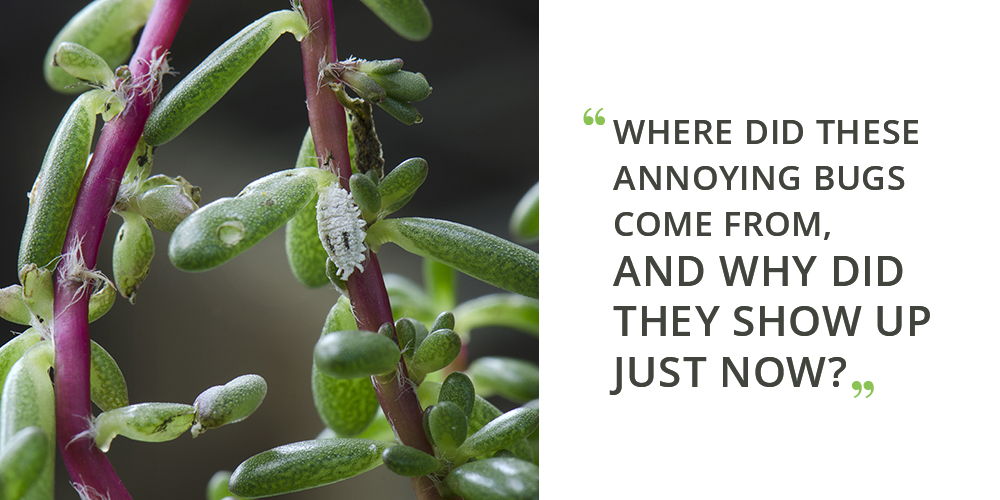
You can thank your furnace for that.
Dry air doesn’t just make us uncomfortable; it’s really hard on most of our plants as well. There are a few plants out there that like desert air, mostly cacti, but for the most part, our houseplants have tropical rainforest or jungle origins. They all come from places where the air is nice and moist.
The sudden change in indoor climate when we turn our furnaces on so abruptly (because seasons couldn’t possibly change gradually) in Alberta creates more stress on our houseplants.
The combination of less light, semi-dormancy, and a sudden zap of humidity creates a lot of stress for houseplants. Stressed houseplants are more susceptible to pest infestations, and that dry-as-toast air creates the perfect environment for many of those buggers.
Ok, but how did the pests just magically appear out of nowhere when they weren’t in your house all summer?
If you haven’t bought any new plants recently (really? Or are you just conveniently forgetting the new one you brought home last week?) or brought plants in from outside for the winter (like geraniums), where they came from is a bit of a mystery.
Generally, houseplant pests are hitchhikers. They come in on other plants, especially ones that spent the summer outdoors or on new plants. They come in with new soil sometimes. Or, they may have already been there over the summer, but because your plants looked healthy, you didn’t notice. As plants weaken and slow down in fall and winter, pests can have a much more significant impact that becomes more noticeable.
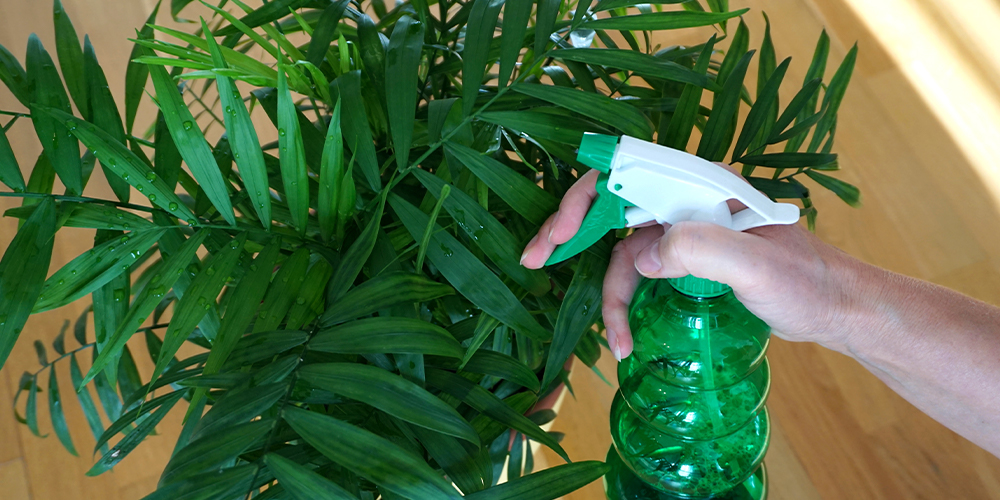
How to Treat Pest Infestations
Quarantine the infested plant in a room by itself or inside a clear plastic bag. If the infestation is small, you may be able to treat it by picking bugs off by hand. If it’s a more extensive infestation, you may need to treat by spraying pests with a soap and water mix, insecticide, or treating with neem oil.
If you have fungus gnats, find out how to get rid of them in this blog.
If you have spider mites, find out how to get rid of them in this blog.
How to Prevent Future Pest Infestations
An ounce of prevention is worth a pound of cure, right? Here are a few things you can do to keep pests away.
Increase the humidity in your home. Get a humidifier for your plants, give them pebble trays, and keep them close enough together to share humidity. You may want to consider adding some grow lights, too.
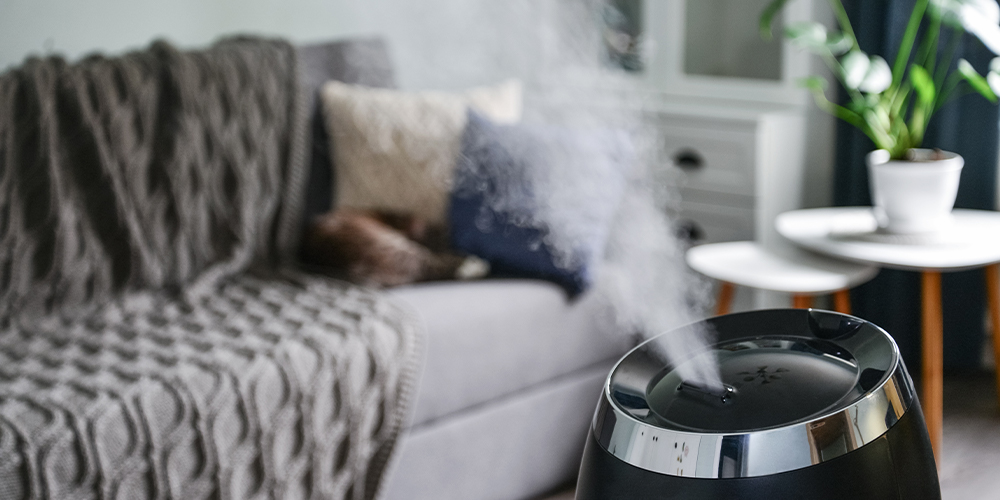
Be extra careful in the future. Quarantine any new plants in a room by themselves or in a clear plastic bag for several weeks. Closely inspect all of your houseplants regularly for signs of pests, and treat accordingly.
Closely inspect, clean, and quarantine plants that are coming inside at the end of summer. Check every single leaf, top and bottom. Thoroughly clean the outside of the pot. If they need repotting, use fresh, high-quality soil and put them into a sanitized pot. And still, quarantine them for a few weeks before they get near your other plants.
Need some solutions for dealing with houseplant pests? Or even if you just need a new houseplant to console yourself after this awful first blast of winter, stop by Salisbury for a visit. We can help you figure out the best way to treat and prevent future pest infestations. We’ve also still got curbside pickup and home delivery available. Just call in your order, or order online from the GrowStore.

